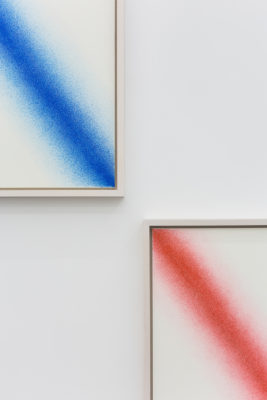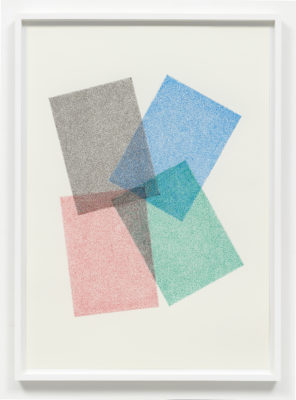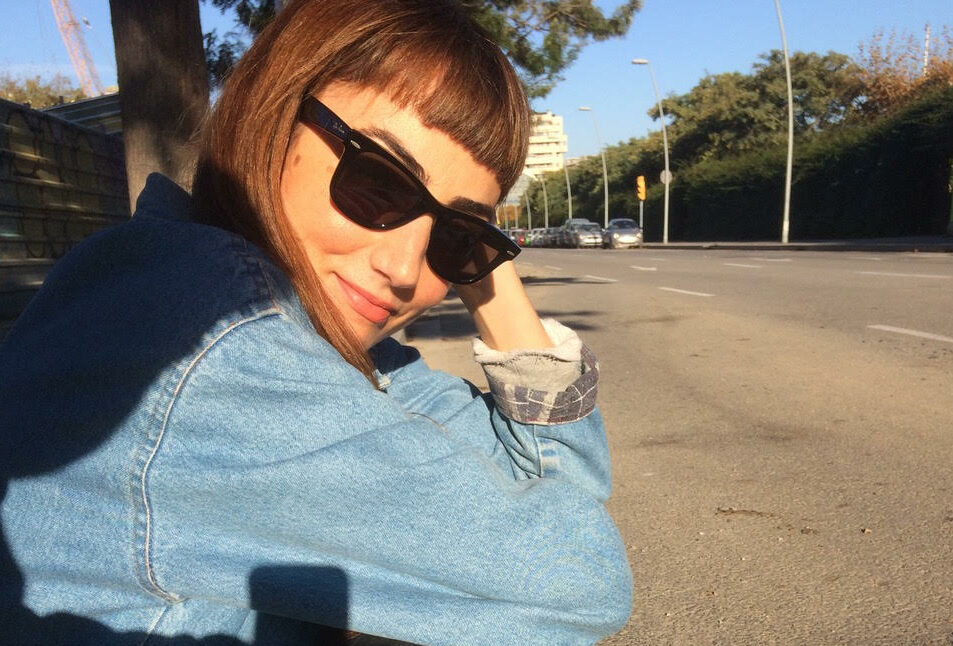Search
To search for an exact match, type the word or phrase you want in quotation marks.
A*DESK has been offering since 2002 contents about criticism and contemporary art. A*DESK has become consolidated thanks to all those who have believed in the project, all those who have followed us, debating, participating and collaborating. Many people have collaborated with A*DESK, and continue to do so. Their efforts, knowledge and belief in the project are what make it grow internationally. At A*DESK we have also generated work for over one hundred professionals in culture, from small collaborations with reviews and classes, to more prolonged and intense collaborations.
At A*DESK we believe in the need for free and universal access to culture and knowledge. We want to carry on being independent, remaining open to more ideas and opinions. If you believe in A*DESK, we need your backing to be able to continue. You can now participate in the project by supporting it. You can choose how much you want to contribute to the project.
You can decide how much you want to bring to the project.

Endless traces of pencils and coloured BIC biros; sheets of paper, folded, unfolded and stacked; folders arranged in rows and columns; rubbers arranged in lines; the constant rhythm of a typewriter typing; ones and zeros, zeros and ones. Ignacio Uriarte, the office, unproductive efforts, the repetition that explores slight variations and doesn’t prevent unexpected discoveries. Nostalgia, humour and resistance. Opposed and at once complementary constellations. We interviewed the artist to focus on the attributes characterising the polyhedral universes of seriality in his work, discussed old and new forms of work, and even managed to understand Boiler Rooms.
*Cover Image: Negative Light Matrix, 2015. Pigmented ink on paper (25 drawings). 59.4 x 42 cm each. Courtesy White Space, Beijing, and NoguerasBlanchard, Barcelona and Madrid.
In Mac y su contratiempo, Enrique Vila-Matas revisits an idea of SØren Kierkegaard’s on repetition that I would like to discuss with you. According to Kierkegaard, ‘Repetition and memory are the same processes, but move in opposite directions; for what is remembered, what has been, is repeated backwards; whereas actual repetition is recalled forward.’ Hence, repetition would be impossible, as when we repeat we always end up doing something different. Repetition would occur as a hope, a desire. In your work, repetitive gestures and the conscious use of repetition and its procedures are constant features. What is repetition for you?
Repetition is a method I use in almost all my works. Through the repetition of a single everyday gesture to create a drawing, I represent the cyclical and repetitive nature of (working) life. In my work, furthermore, repetition usually fills a space in a regular way, such as a monochromatic drawing, for example. I like the contradiction of a full space resembling an empty space. I like the contradiction of a lot of work being required to achieve virtually nothing because in this sense the drawing, seemingly empty, can almost only be read as the representation of the time and the effort needed to produce it. This roots the work in the banal, everyday reality of the world of labour. I also use repetition to try and represent the humanity that appears when we are subjected to strict discipline. The rules are obeyed to a certain extent, though not completely. There are some variations or digressions within certain ranges, as in scientific experiments, where premises are also established given that experiments are repeated a number of times to determine a range of results. In my work, non-fulfilment and fluctuation within certain parameters reveal the human side of work, moods, physical limitations … They are not expressed through grand gestures but through thousands of variations or digressions. The result could be described as a typology of mistakes — another somewhat existentialist vision of life and of the artistic process. At a personal level, through repetition I can also reach transcendence, as in meditation or prayer. Insistence on a specific activity and the repeated observation of a phenomenon encourage thought and give us the quietness we need to travel with our minds in a slightly more serene and ordered way.
I would like to enter into this paradox, this contradiction contained by your procedures of repetition where we find different poetics and different relations with the real. On the one hand, they seem to celebrate the pleasure in the repetition itself, while alluding to a rejection of stagnation, a desire for regeneration or for the transcendence you were pointing out. I’m writing these lines to you while listening to your Contar 8 horas sound work via the Ràdio Web MACBA (RWM) podcast that evokes techno and its ability to transform reiteration into a sublime gesture. How did you begin to work with sound? How corporeal is your work? And incidentally, do you like techno?
The pleasure of repetition is in some sense masochistic. I’m not a tidy or disciplined person by nature, which is why during my life as a clerk I used to suffer the rigidity of hierarchy that makes you do things over and over in the same way. In my artistic practice today, adhering to the rules with exaggerated discipline symbolises a sort of revolt and a response to my traumas of the past. In some works I raise the slightest nonsensical gesture to the category of sole character in a complex monumental play that obeys (and therefore represents) strict code rules.
In the sound piece you mention, a voice is heard counting during eight hours, following the rhythm of a second hand. The piece represents (and experiences) a typical workday, and at the same time creates an equivalence between language and time that I find pleasing and interesting. Routine is an activity repeated periodically, and this is easily represented and perceived through sound. In fact, most of us prefer for there to be a rhythm in music, which is no more than a periodic repetition.
I listen to all sorts of music. I prefer to see as well as listen to house and techno, in a Boiler Room or an Against the Clock for instance, two YouTube formats. I feel that music is more alive if you’re able to understand that sounds are generated by hands.

Positive and negative diagonal glow, 2017. Biro on paper (8 drawings). 59.4 x 42 cm each. Courtesy White Space, Beijing, and NoguerasBlanchard, Barcelona and Madrid.
Whenever your work is discussed people mention that you left your former office job and your career in business administration. Thanks to the new forms of work created by Post-Fordism, however, all that is somewhat blurred. If we accept the idea that the division between ‘free time’ and ‘work time’ is increasingly less perceptible, even more so in the case of cultural workers (we’re no longer sure whether we’re reading or researching, chatting or interviewing), does it make any sense to continue to relate your production with the office? (This is a reflection I share with you from my living room, which is my office.)
It makes sense to me. Obviously, the office as we know it is destined to disappear. In the future, administrative work will be carried out by algorithms and the new clerks will be programmers capable of perfecting company software and eradicate mistakes. Indeed, to a great extent this is already the case. And the same goes for the future factory worker, who will be replaced by robots and engineers. This tendency has existed since the eighties.
Funnily enough, what we haven’t overcome are our mental ties to the office as a real place that continues to exist — sometimes physically, at other times intellectually and at others in the form of software. On our computers, for example, we continue to use the concepts of desktop, folders and wastepaper basket, all of which are mental aids to help us continue to relate content and physical space, to feel safe and not lose our way in (actual) dematerialisation.
We live in the analogital age. We are allowed a certain degree of nostalgia, an attachment to the physical world and to habits learnt. The best example is the computer itself — if we compare a present-day laptop to a portable typewriter made a century ago, we’ll see that there are few differences: the size and inclination of the sheet of paper or the screen, the arrangement and situation of the keyboard; the two are 90% the same. My theory is that this design is what prevented the emergence of a new ludist movement.
Indeed, the same bodily posture, almost identical movements of fingers and eyes … Maybe human beings need to cling to recognisable assumable objects such as the typewriter, in the face of computational technology, whose scale eludes our ability to perceive and represent? Could this be, perhaps, the only way to try and ‘overcome’ the impossible distance that, according to Günther Anders, exists between a technology’s creative capacity and our understanding of its scope?
Before the introduction of personal computers, computers were portrayed (and perceived) as all-powerful entities capable of thinking independently and of working with human beings, but also of controlling and combatting them. The 2001: A Space Odyssey is a fine example of this sceptical and at once realistic vision. When the PC arrived in 1984 and replaced the typewriter and the calculator on the desktops of secretaries and accountants, it was marketed as a super typewriter. Like a lonely crab, the computer entered into the shell of the defunct typewriter in order to use it as a carapace that would protect it from any form of criticism. The computer suddenly seemed inoffensive and nobody thought that such a familiar-looking machine would kill millions of jobs and increase the control and pressure on workers and citizens in general. To return to the question: yes, human beings do have a need to cling to forms and ways of acting they know and control but it was power, in this case the corporate world, that managed to give a harmless appearance to the digital revolution from above, promoting the permanence of known forms and habits, at least on the surface.

1s & 0s, 2014. Typewriter type on paper (128 drawings). 29.7 x 21 cm each.
Courtesy i8, Reykjavik, and NoguerasBlanchard, Barcelona and Madrid
You observed earlier that today we are allowed a certain degree of nostalgia for the physical world. What about resistance? Is it possible to resist with the body, with everyday gestures?
Art offers many paths of resistance — for a start, the rules of mandatory efficiency that usually govern the behaviour of the homo economicus. In fact, turning these rules around and dedicating great efforts to achieving practically nothing, for instance, is quite a common strategy in conceptual art. This could sound banal, but it’s almost revolutionary. In my case I make everyday, unproductive gestures the main feature of works that require great effort. I enlarge gestures, monumentalising them, and at the same time I subject them to a strict routine. Organising the unorganised, I stifle any attempt to escape, any distraction from reality. At the same time, I deflect from my reality making these meditative drawings. Everything is quite complex and ambiguous, but to return to your question, I see my work as a sort of micro-resistance in a humorous key. My way of working could be symbolised by a child whose parents tell him to ‘Stand up straight!’ and reacts by walking as stiffly and erectly as possible, almost like a robot. It’s too serious to be taken seriously — it’s a joke.
What sort of thing is repeated in your daily routine? What’s the system in your studio?
I usually get up around 7.00 a.m., sometimes earlier, and make some music on my sequencer and synthesisers, a sort of jam session that lasts between ten minutes and one hour. As I’m still naughty, I’ve decided not to keep anything at all and start from scratch each time. I repeat this before going to bed at night. I usually go to the studio from 9.00 a.m. to 7.00 p.m., and devote most of the time to drawing. I alternate between activities and different types of drawing. On a typical day I can spend roughly four hours making a drawing on a typewriter and then spend three more hours tracing straight lines on a technical drawing table. These are very physical activities and I have to vary them in order to avoid backaches. I go out for lunch when I’m hungry and I almost always devote one or two more hours to more administrative tasks that I have somewhat neglected of late: correspondence with galleries, accountancy, etc. As I have a tight exhibition agenda, I make many works thinking of specific spaces and trying to create a sort of narrative or composition. At other times I treat myself to making works without thinking of anyone or anything in particular, or even giving a bad idea an opportunity. Sometimes these works end up becoming the best works.

Vierfarbüberlagerung, 2017. Biro on paper. 84 x 59.4 cm. Courtesy Philipp von Rosen, Cologne, and NoguerasBlanchard, Barcelona and Madrid

Carolina Jiménez is a curator and researcher.
"A desk is a dangerous place from which to watch the world" (John Le Carré)